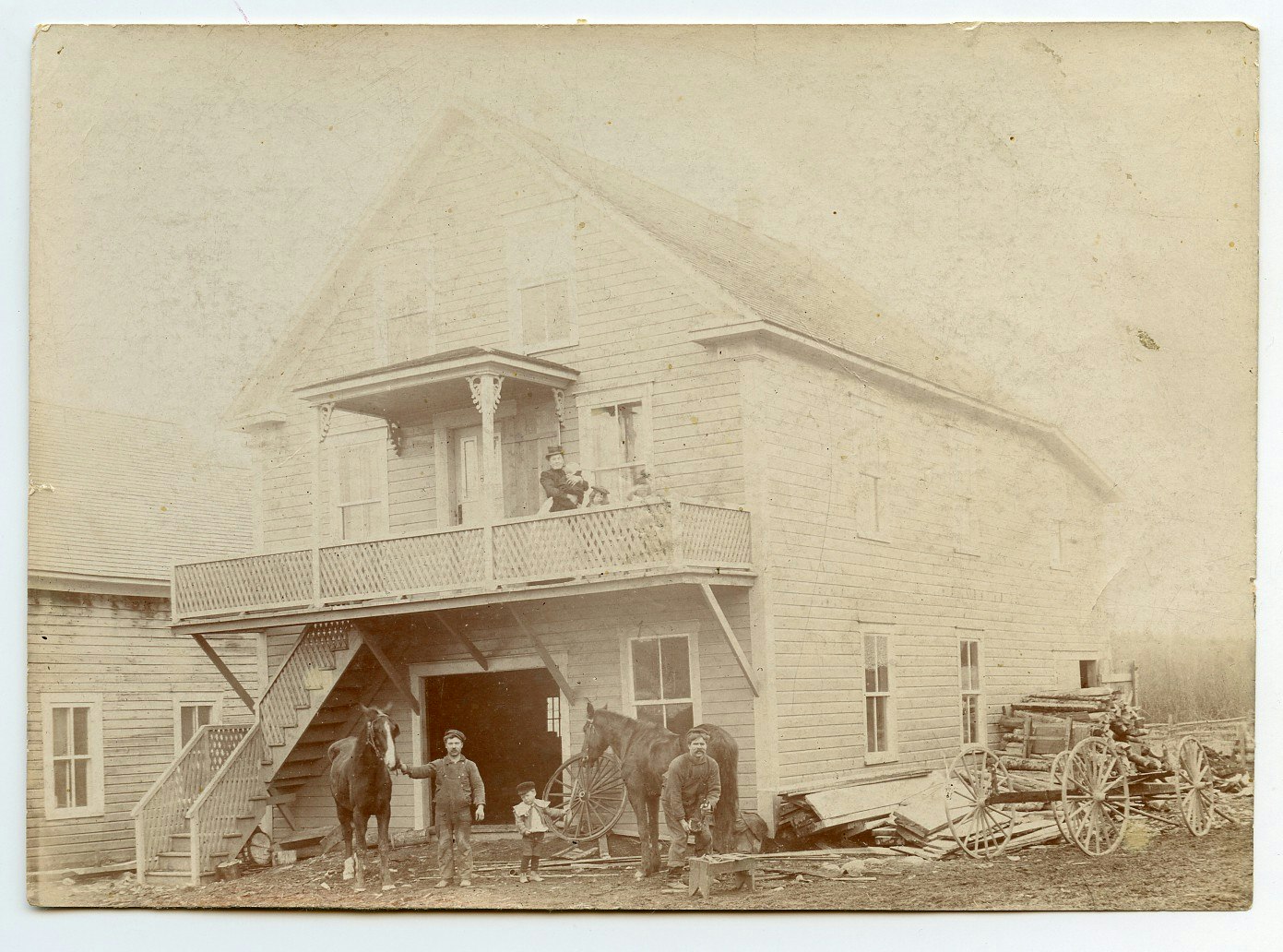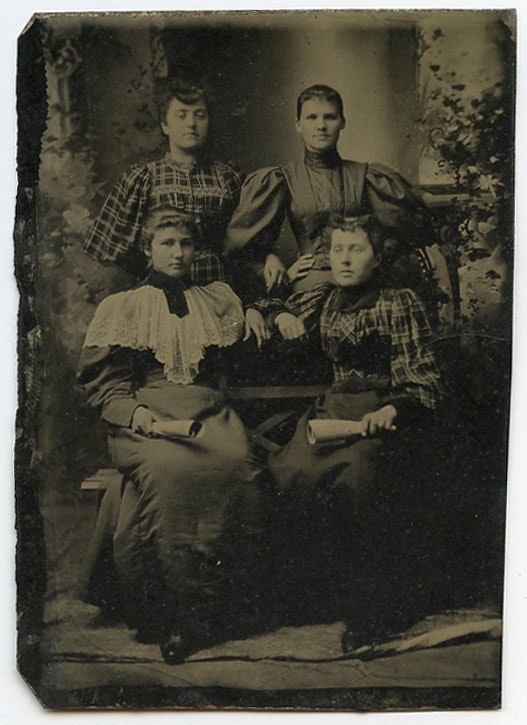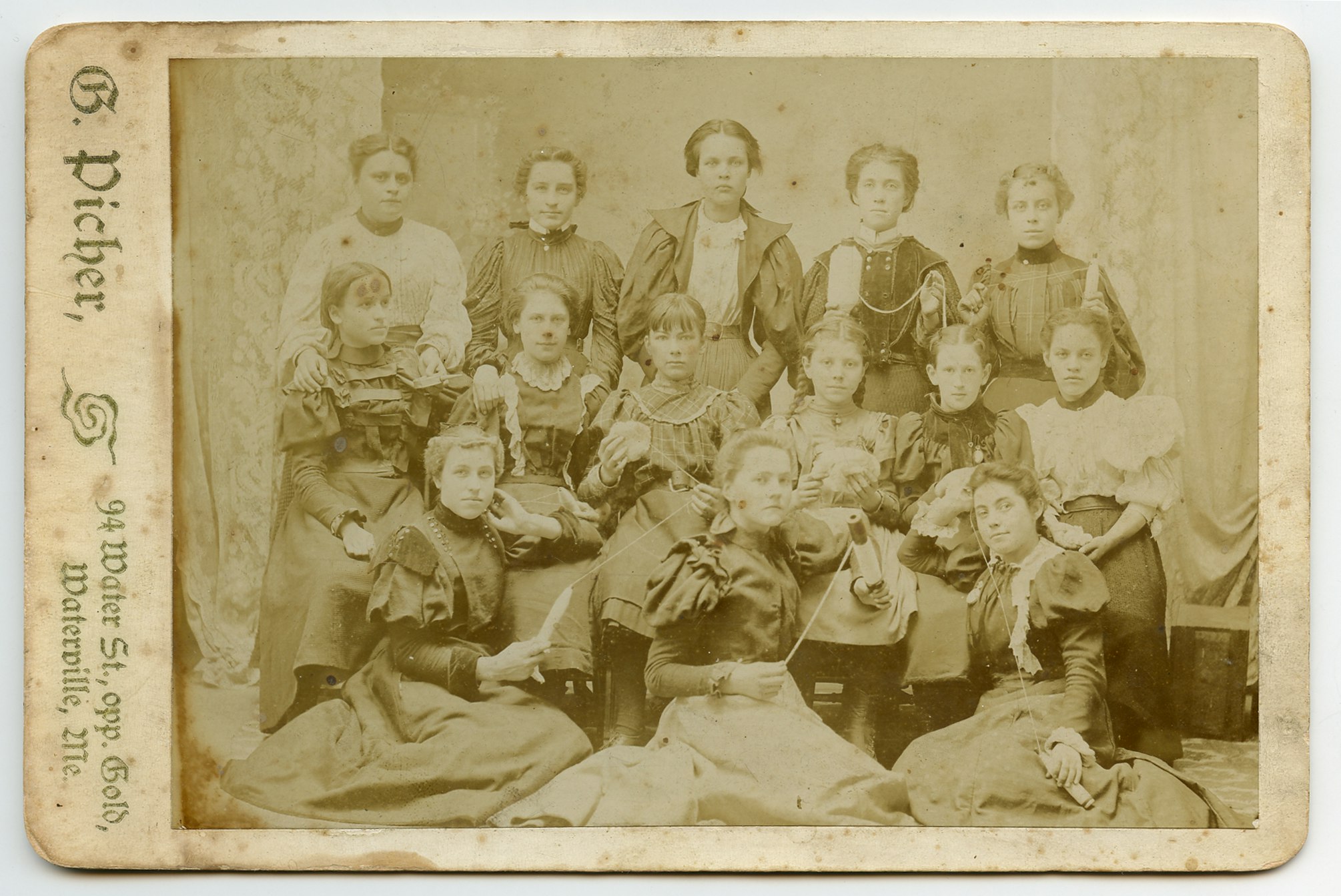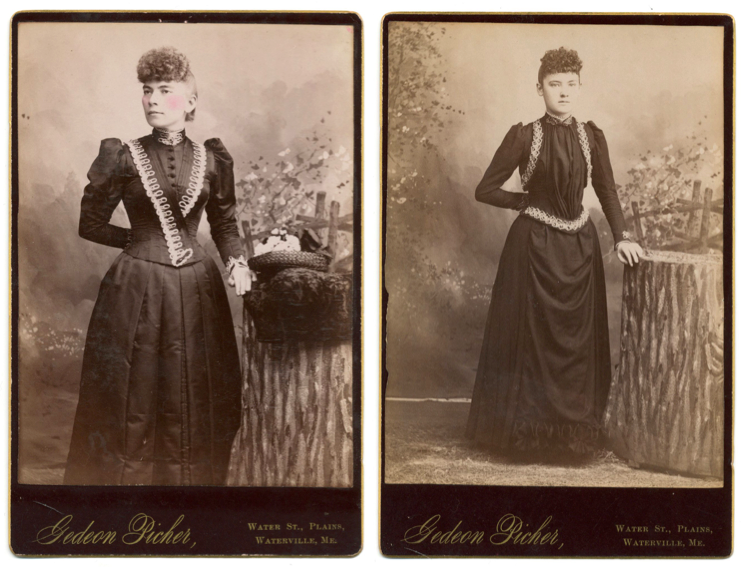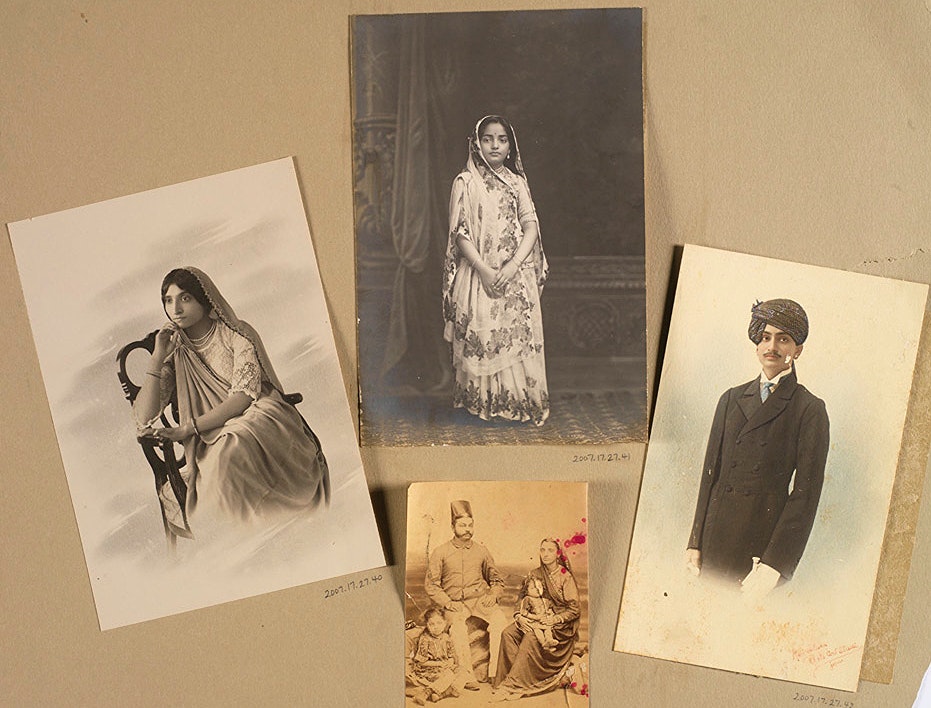Diaspora
To speak of diaspora is to speak of a dispersion or scattering of people. It assumes forced or voluntary movement from a homeland – a geographical or cultural point of origin. It further assumes that people around the world who claim a common origin may share other points of similarity, such as a race, language, or set of beliefs. But as cultural theorist Stuart Hall has written of the black diaspora, diasporic communities are by no means homogenous entities. Rather, they are continuously taking shape through myriad migrations, political conditions, and local forces.
Photography can document the migrations and settlements of diasporic subjects. And it can construct a diaspora by making visible commonalities among dispersed peoples. Photographers themselves can claim diasporic identities, moreover, and some would say these can be traced to their choices of subject matter and style. In the United States, African American studies scholar Leigh Raiford was among the first to articulate a “photographic practice of diaspora.” Writing in 2006, she attributed this practice to photography’s “capacity to build or envision community across geographical location” and to “its capacity to engage its viewers in critical and expressive or emotional registers.” In her 2012 book Image Matters: Archive, Photography and the African Diaspora in Europe (Duke University Press), historian Tina Campt takes Raiford’s ideas further, reflecting on diaspora through the family photographic archives of black Germans. Campt asks: What constitutes a diasporic photograph? How do ordinary photos express desires for national and cultural belonging? What do they simultaneously tell us about differences within a diaspora? Scholars like Campt remain critical of efforts to use diaspora as a “model for explaining the cultural and community formations of all black populations” (my emphasis).
Popular efforts to define this keyword through photography, however, tend to be much more optimistic about its usefulness. Take the Digital Diaspora Family Reunion (DDFR) community project, founded by African American filmmaker Thomas Allen Harris. Harris and his team have been travelling across the US and internationally since 2009, collecting family photographs, interviewing their owners, and sharing images and stories on a dedicated website. The DDFR began with a focus on the black diaspora, but today presents itself as constructing a human diaspora, or “creating a sense of family out of strangers.” By sharing our personal photos, the project claims, we can “celebrate the connections, shared values and common experiences that unite us all in our basic humanity.”
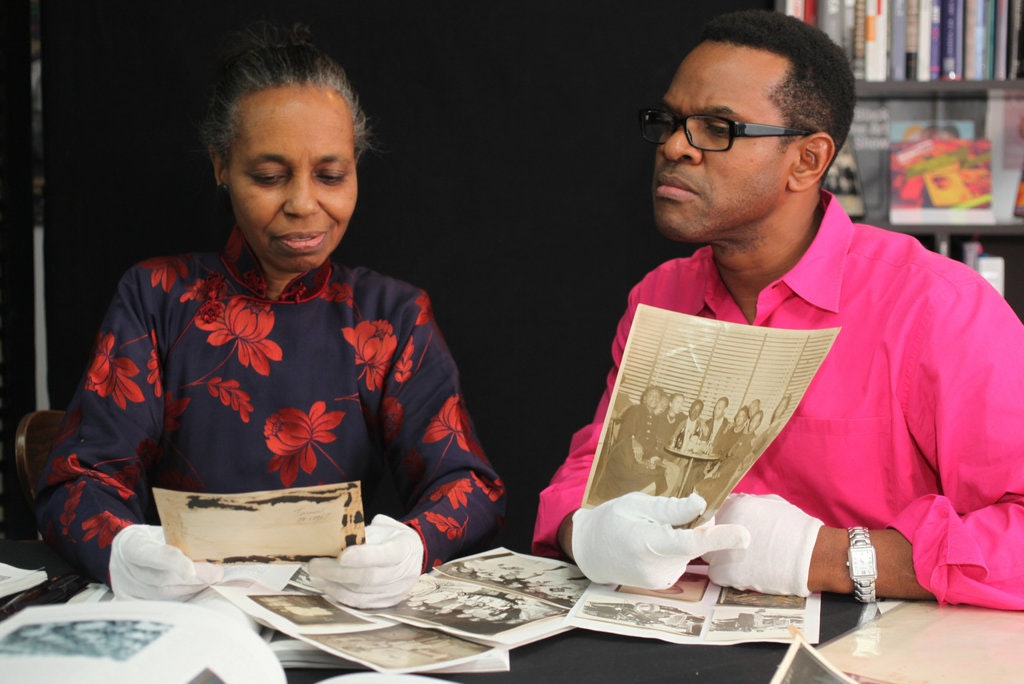 Thomas Allen Harris examines photographs owned by Lana Turner for inclusion in the Digital Diaspora Family Reunion project. Photograph by Chester Higgins Jr./The New York Times
Thomas Allen Harris examines photographs owned by Lana Turner for inclusion in the Digital Diaspora Family Reunion project. Photograph by Chester Higgins Jr./The New York TimesMy own work with the Photography and Migration Project has adapted techniques developed by Harris, yoking them to the critical approaches of Raiford and Campt. It mattered that I conceived of the project in Waterville, Maine, a small city with a rich history of immigration once intertwined with its textile industry. Constituting its largest historical migration, hundreds of thousands of French-speaking Canadians emigrated to Maine in the late nineteenth and early twentieth century from rural farming communities in Québec, finding work in booming factories along the Kennebec River. I grew up with a similar migration story. My mother’s family had emigrated from New Brunswick, a Canadian province bordering Maine. They settled in the manufacturing city of Lowell, Massachusetts, in a Franco-American neighborhood where Catholic schools and church services were conducted in French. For reasons never revealed to me, no family pictures date to before Claire Peloquin’s marriage to my grandfather, Roland Lefebvre. Apparently they did not make the trip from Canada. No family member, moreover, ever returned to their Canadian homeland after settling in the US; their connections with the place, which photos can help preserve, were largely severed.
If there were photographs of the Peloquins and the Lefebvres before their emigration to the US, I imagine they would look something like the images above. Taken in a small Québécois town, these photographs portray multiple generations of the Poulain-LaVerdiere family. In the albumen print picturing their rural home, Ada Poulain LaVerdiere tends to her three young children on the balcony. The men pause their labor to regard the camera, standing in front of the family’s blacksmith shop and alongside the horses that worked their farm. In the tintype below, made around 1894, Ada appears again (in the back row), posing arm-in-arm with her three sisters. These photos, passed down to Ada’s granddaughter, Bunnie Picher, preserve memories of the family and its ancestral home.
I picture my female relatives in Lowell looking an awful lot like the fourteen subjects of this cabinet card, who pose with spools of thread in 1891 for a Franco-American photographer in Waterville named Gedeon Florien Picher. The women in the picture were shift workers in the textile factory owned by C. F. Hathaway on Appleton Street. That two sitters inscribed their names on the back of the photograph, and that it has been preserved in the Picher family, suggest that Franco-American women were proud of their work in the textile industry. As a descendent of such women, I relish this idea, even if it is a projection onto a carefully staged photograph of my own desires. Other portraits made in Picher’s studio reveal the important role photography played in representing Franco-Americans as genteel and modestly prosperous. Picher’s studio itself was located on Water Street, in the heart of Waterville’s predominantly Franco-American neighborhood. Many of its residents posed for Picher, wearing their “Sunday best.” Like all studio photos, his were highly conventional and complimentary of their sitters, often reusing props and painted backdrops to create the image of a bourgeois social type.
When I first encountered these pictures in 2015, it was hard not to see them as material traces of my own family, as the honorific portraits of Franco-American ancestors I dreamed of finding and preserving. It seems I had to leave Lowell and move to central Maine in order to experience the sense of kinship and belonging that diaspora traditionally promises. But after John and Bunnie Picher gifted nearly five hundred tintypes, albumen prints, snapshots, and albums to Colby’s Special Collections, and I began to study these pictures with my students, I saw how my diasporic identification could overshadow the many differences between Franco-Americans in Lowell and Waterville – from their pronunciation of French names, to the relative diversity, size, and urban character of their respective communities. The population of Lowell was around 100,000 in 1900, compared to 9,000 in Waterville at the same time.
It has been important for me to keep this critical perspective in view, while not losing sight of how the Picher/LaVerdiere Family Photograph Collection can activate a diasporic feeling among Franco-Americans in Waterville. After the local newspaper ran a story about the collection in April 2015, for example, I got a phone call from Therese Small (née Bernier), then 87 years old. A Waterville native who continued to reside off of Water Street, Therese explained that she had a large collection of family photographs but no children to whom she could leave them. She invited me to her home, shared her childhood stories, and shortly thereafter her photographs entered Colby’s Special Collections. Earlier this month, we celebrated Therese, who passed away in August 2016, and had an opportunity to share her photographs with the Waterville community for the first time. Again, the local press covered the event, printing a photograph of Therese and her young classmates at the Notre Dame School on Water Street, taken around 1910. A woman whose family migrated to Waterville from Québec tracked me down. It turns out that she has a remarkably similar photograph in her family’s collection, featuring her two aunts, now in their 80s, dressed as angels before an altar. She, too, was wondering what to do with the pictures. (We are meeting at Colby this week.)
 Colby College student Muheb Esmat holding a photograph of children dressed as angels at the Notre Dame School, Waterville, Maine, gelatin silver print, ca. 1910s, Therese Bernier Small Family Photograph Collection, Special Collections, Colby College Libraries. Photograph by Michael G. Seamans / centralmaine.com
Colby College student Muheb Esmat holding a photograph of children dressed as angels at the Notre Dame School, Waterville, Maine, gelatin silver print, ca. 1910s, Therese Bernier Small Family Photograph Collection, Special Collections, Colby College Libraries. Photograph by Michael G. Seamans / centralmaine.comAs Tina Campt argues in Image Matters, the photographic practice of diasporic requires looking at “multiples, sets, and archives of photographs.” The act of collecting and archiving local photographs, in other words, can fortify connections within a traditional family structure as well as draw out new relationships between diasporic subjects, conceiving of them as family. This idea underlies the work of the Family Camera Network, a scholarly partnership established in Toronto in 2016. In this three-year project, researchers are “explor[ing] the role of domestic photographs in shaping diverse concepts of family and representing different experiences of diaspora – that is, experiences of dislocation, migration, and settlement at different moments in Canadian history.” Key components of the Family Camera Network include the collection of family photographs and stories and the preservation of those objects within a public archive hosted by Canadian cultural institutions. What is a family photograph? And how does it both illustrate and define family? These questions remain at the forefront of this project, as Canada welcomes more and more refugees and North Americans are redefining the notion of family with respect to gender, sexuality, and nation.
The Photography and Migration Project poses questions about diaspora and family in response to its own local conditions. Today numbers of Franco-Americans in Waterville are dwindling, and few residents of the city now speak French. The factories that once employed large numbers of Franco-Americans and Lebanese-Americans have closed. New immigrant groups from Africa, Asia, and Latin America are now calling Waterville home, bringing with them a new collection of histories and traditions. How will these different diasporic communities work together to redefine cultural heritage in Waterville in the twenty-first century? What role will their migration stories play in the city’s downtown revitalization project, currently underway? How can we represent and preserve the diversity of those stories photographically? A large-scale community event at the Waterville Public Library on April 22 will put these questions in action. Area residents are invited to bring their historical family photographs to the library for digitization and to share their migration stories on video, while enjoying local foods and music, photo preservation workshops, and demonstrations of early photographic processes. We will ultimately display the raw materials collected at the community event – and likely at subsequent events – on a public, interactive website. How that website imagines the relationship between photography and diaspora remains to be seen.
How could a virtual space support emotional investment in the notion of diaspora and expand its traditional boundaries? How could it frame the local community as a collection of dispersed cultural groups while encouraging the recognition of diversity within those groups? Have you tackled such questions in your own community and scholarly work?
